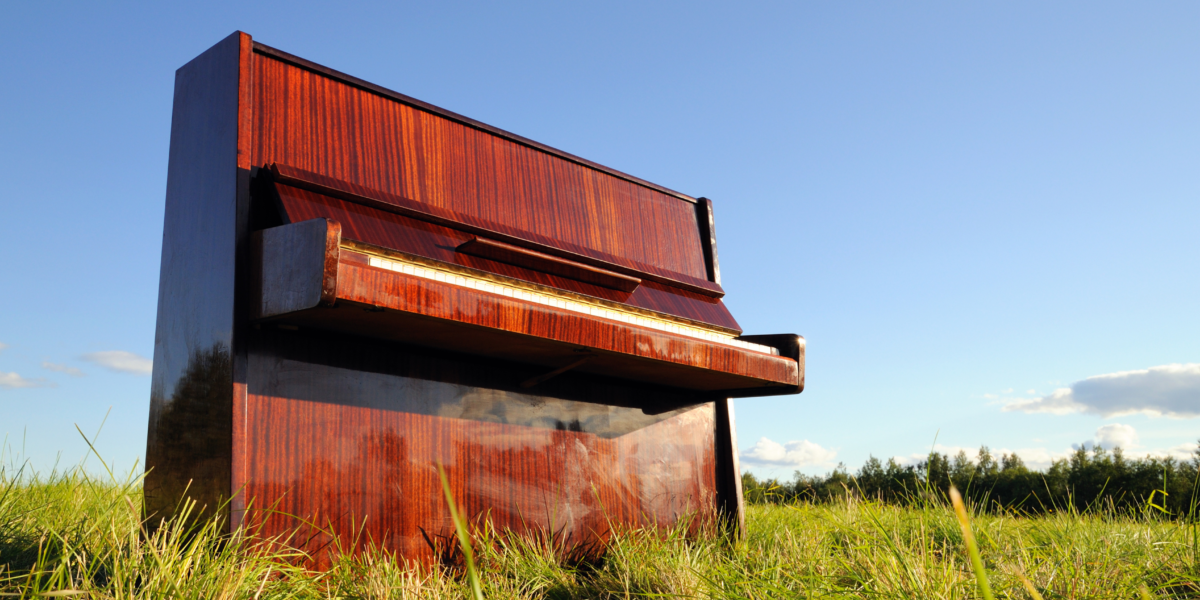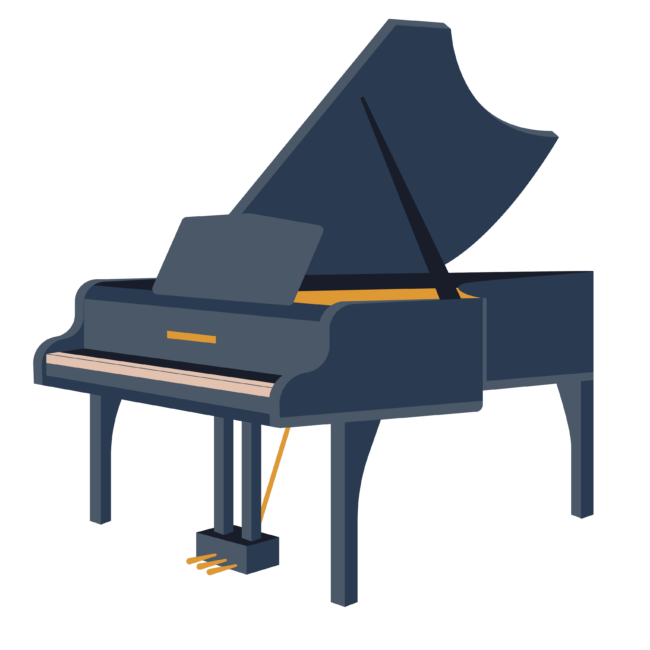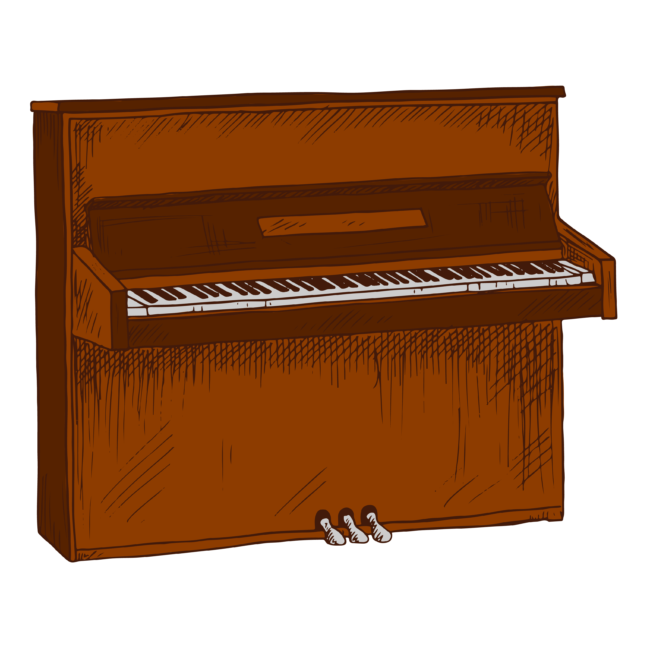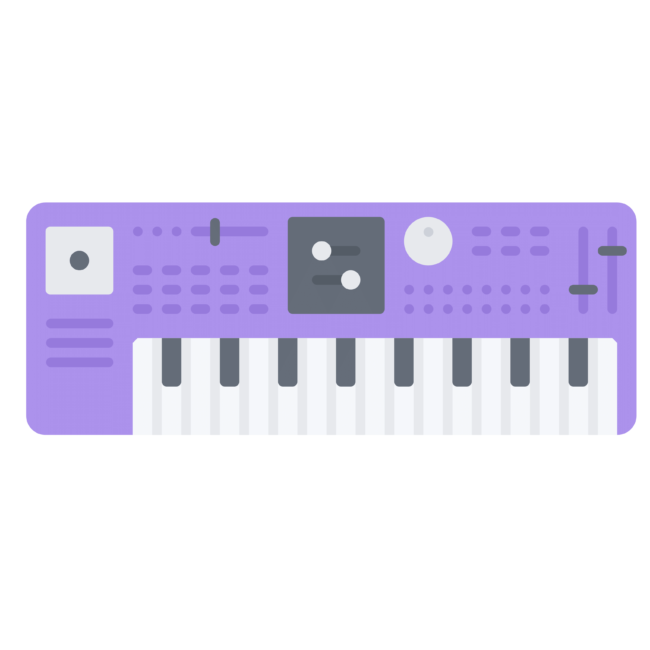Types of Pianos: Characteristics and Dimensions

There are many different types of pianos in the world, but which one is the right one for you? Discover their names and learn all about their characteristics.
People have built and innovated pianos since Bartolomeo Cristofori revealed the first Piano in 1700. Since then, pianos have gone from illustrious instruments played by professionals and aristocrats to accessible to the masses.
Many pianos are on the market today, available in various shapes, sizes, and designs. Some pianos are lightweight and easy to carry around, while others are built with the finest wood and weigh over 1000 pounds!
This article goes over the various pianos around today. It provides a short description, along with the dimensions, weight, and approximate price of these magnificent instruments.

Grand piano.
The grand is the largest of the pianos. With an elegant design, you can find them in concert halls, churches, or modern homes (with enough space). Grand pianos are expensive, ranging from $20,000 to over $200,000.
This type of Piano comes in several different formats:
- Baby Grands are the smallest of the grand format and measure between four feet and six inches in up to five feet and three inches in length and weigh approximately 550 lbs. For this type of Piano, they’re ideal for fitting in your home–providing you have the space.
- Medium Grands are a size up and usually measure from five feet and five inches up to six feet and three inches in length, weighing approximately 600 lbs.
- Parlor Grands measure between six feet three inches and six feet ten inches in length and weigh approximately 750lbs. While professionals use these to practice, musicians sometimes bring parlor grands on tour.
- Concert Grands are usually from seven feet and four inches up to nine feet and six inches in length. They weigh from approximately 900 to 1200 lbs. Because of its larger case and soundboard, the concert grand piano emanates louder sounds–making it ideal for performing in large spaces.
Want to learn about some of the most expensive grand pianos? Look at The Most Expensive Pianos in the World on our blog.

Upright/Cabinet piano.
Arriving onto the scene in the early 19th century, the strings in cabinet pianos are set up vertically within the casing. Because of their efficient shape, cabinet pianos are much easier to store, making them more accessible–and they sound fantastic.
The standard upright piano dimensions are 58 inches in width, 48 to 60 inches in height, and around 24 inches in depth.
Uprights can come in different shapes and sizes–often with the idea of creating smaller acoustic Piano that easily fits into the average home.
- Spinet pianos are the smallest of vertical pianos. The drop action of spinets from other pianos is small. They were popular in the mid-20th century. However, they were discontinued due to poor harmonics and tone. Spinets are usually 36 to 39 inches tall, weighing between 200 to 300 pounds, and selling for less than $1,500.
- Console pianos are a size up from spinets and have full-length action. They’re high-quality pianos that are ideal for beginner and intermediate musicians. They are generally between 40 and 44 inches tall, weigh 350 to 450 pounds, and sell for $2000 and $6000.

Digital piano.
With the advent of technology, the emergence of digital pianos and keyboards is taking the musical world by storm! While earlier electronic pianos don’t sound as good as their acoustic counterparts, sound technology is improving at a rapid pace.
A quality digital piano’s sound practically rivals the highest-tier acoustics now. Many digital instruments enable us to connect them to our computers–further enhancing and expanding the sound quality and options.
Digital pianos come in all sorts of shapes and sizes. Many have their own console housing the keys and come with two or three pedals. Others are minimalist instruments with rectangular body keyboards with speakers embedded in the frame.
Check out our blog Best Digital Pianos with Weighted Keys, to learn about digital pianos.
Keyboards
Keyboards are similar to digital pianos. They tend to come with fewer keys and more sound options. They’re lightweight and cost between $200 to $1,500.
A close relative to the digital keyboard is the Midi keyboard. These keyboards don’t have built-in speakers. They’re designed to plug into your computer and work with digital audio workstations.
Synthesizers
Synthesizers are a blend of digital Piano and keyboards. They tend to come with 88 weighted keys, like a digital piano that offers musicians many sound manipulation options.
Which Piano is ideal for beginners?
There’s no single “ideal” piano for beginners. Everyone has a different reason for playing. When shopping for a piano, you need to consider the price, size, portability, instrument quality, and musical intentions.
In other words, the ideal Piano for a beginner depends on the setting you want to play and the sounds or music you want to create. If portability is important to you, digital pianos and keyboards are the superior choices. On the other hand, if you’re set on playing an acoustic piano and have enough space, perhaps an upright piano is a good place to start.
We recommend starting with an instrument that has 88 weighted keys and is on the cheaper side, like a digital piano or a console piano. This way, you can get the whole piano experience without taking out a loan. Besides, you can always upgrade later on.
So what’ll it be?
There are tons of pianos available for beginners and professionals alike–each with its benefits and drawbacks. They offer musicians various musical paths to follow, unique sounds to create, and settings to play in.
Like pianos, the methods for learning how to play are also expanding. Before the internet, the only way to learn was through books or a piano teacher’s help. Today, you can find everything you need online, and plenty of good teachers are around. If that wasn’t enough, there are piano apps to optimize your lessons too!
Simply Piano is a fantastic tool that allows you to choose when, where, and how long your lessons are. Learn everything you need, from reading sheet music to playing your favorite songs in a structured and effective manner.









